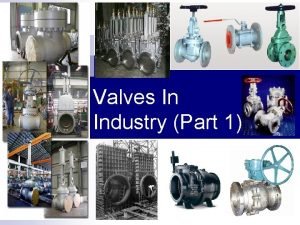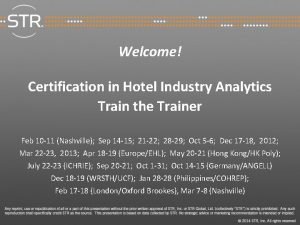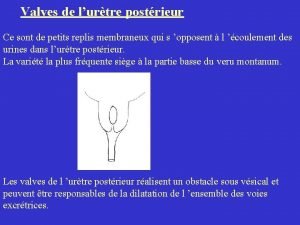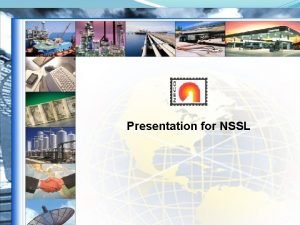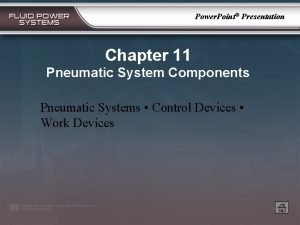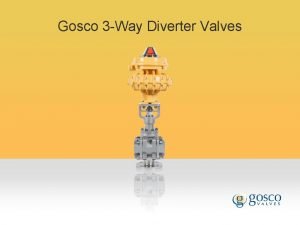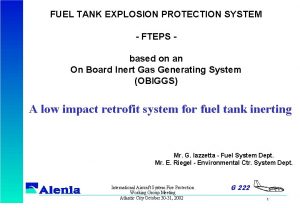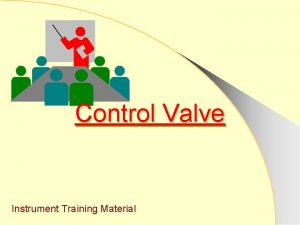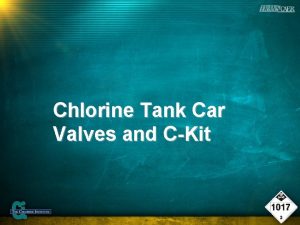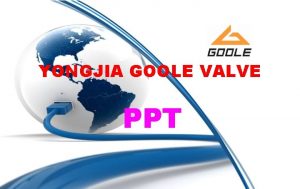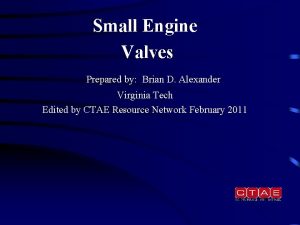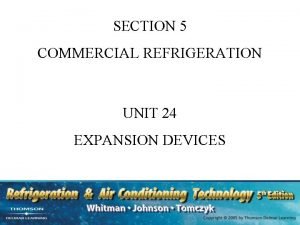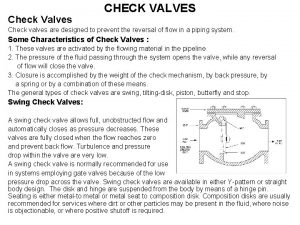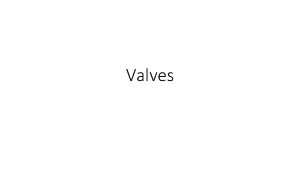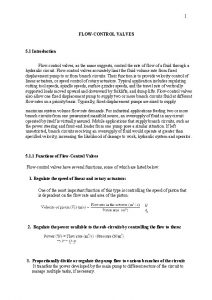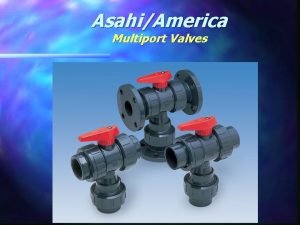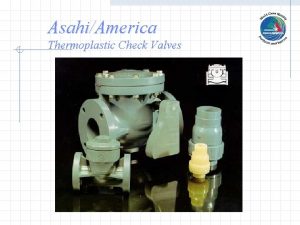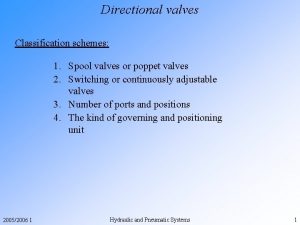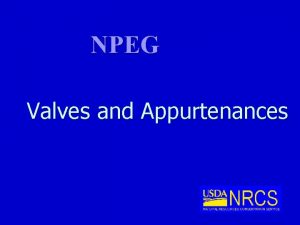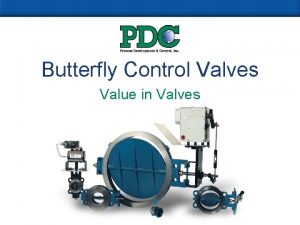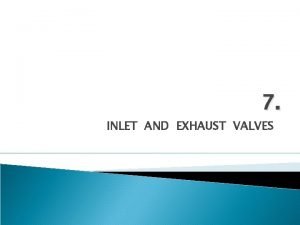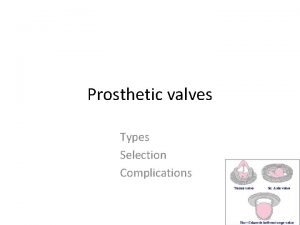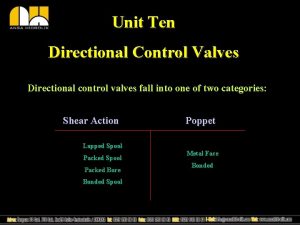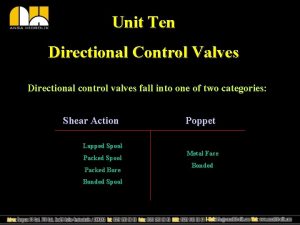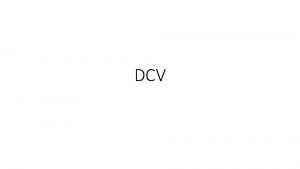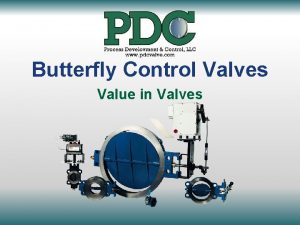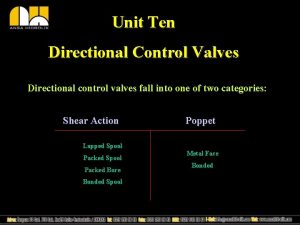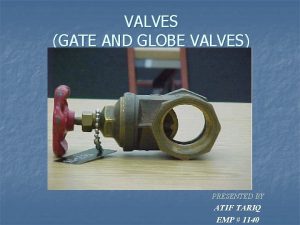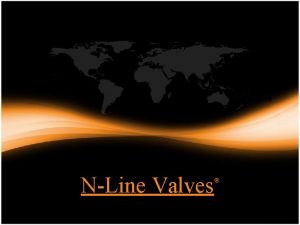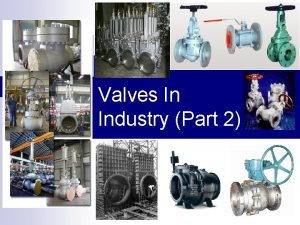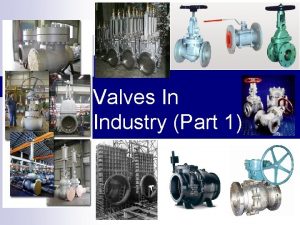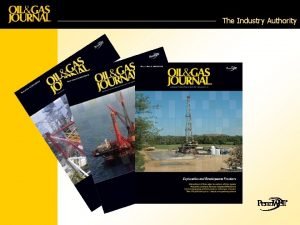Valves In Industry Part 1 Introduction to Valves























- Slides: 23

Valves In Industry (Part 1)

Introduction to Valves Mechanical devices specifically designed to direct, start, stop, mix or regulate the flow, pressure or temperature of a process fluid. n Manufactured from various materials, mostly made from steel, iron, plastic, brass, bronze and special alloys. n 2

Valves Classification According To; Function 2) Application 3) Motion 1) 3

Valves Classification According To Function n i) iii) n Categorized into three areas: On-Off Valves Non return Valves Throttling Valves Specific valve-body designs may fit into one, two, or all three category. 4

Valves Classification According To Function 1) On-Off Valves Ø Start or stop the flow of the medium through the process. Ø Example: gate, plug, ball and pressurerelief valves. Ø Can be hand-operated or automated with the addition of an actuator. 5

Valves Classification According To Function (On-Off Valves) Gate Valve Pressure Relief Valve Ball Valve 6

Valves Classification According To Function (On-Off Valves) Used in mixing applications where a number of fluids are combined for a predetermined amount of time (exact measurements are not required). Ø Used for immediate shut down of a system when an emergency situation occurs. Ø 7

Valves Classification According To Function (On-Off Valves) Ø Ø Ø Pressure-relief valves are self-actuated on-off valves that open only when a preset pressure is surpassed. Used for guarding against overpressurization of a liquid service. Applied in gas applications where overpressurization of the system shows a safety or process hazard and must be vented. 8

Valves Classification According To Function 2) Non return Valves Ø Allow the fluid to flow only in the desired direction. Ø Any flow or pressure in the opposite direction is mechanically restricted from occurring. Ø All check valves are non return valves. 9

Valves Classification According To Function (Non-return Valves) Non-return valve 10

Valves Classification According To Function (Non-return valves) Backflow of fluid is prevented to ensure the safety of equipment and the desired dynamic of the process. Ø Applied in process systems that have varying pressures, which must be kept separated. Ø 11

Valves Classification According To Function 3) Throttling Valves Ø Used for regulating the flow, temperature or pressure of the service. Ø Can be moved to any position within the stroke of the valve and hold that position, including the fully-open or fully-closed positions. 12

Valves Classification According To Function (Throttling valves) Ø Ø Ø Also provided with actuation system for greater thrust and positioning capability (automatic control). Example: pressure regulator varies the valve’s position to maintain constant pressure downstream (close to decrease and open to increase the pressure). Control valves are valves that are capable of varying flow conditions to match the process requirements (always equipped with actuators). 13

Valves Classification According To Function (Throttling Valves) 14

Valves Classification According To Application Categorized into three: 1) General Service Valves 2) Special Service Valves 3) Severe Service Valves 15

Valves Classification According To Application 1) General Service Valves Ø Designed for the majority of the commonplace applications that have lower-pressure ratings, moderate-temperature ratings, noncorrosive fluids and common pressure drops that do not result in cavitation or flashing. Ø Had some degree of interchangeability and flexibility for wider range of applications. 16

Valves Classification According To Application 2) Special Service Valves Ø Designed for a single application that is outside normal process applications (custom-engineered valves). Ø Handled a demanding temperature, high pressure or a corrosive medium. 17

Valves Classification According To Application 3) Severe Service Valves Ø Equipped with special features to handle volatile applications and high pressure drops (highly engineered trims). Ø Special actuation may be required to overcome the forces of the process. 18

Valves Classification According To Motion Categorized into two: 1) 2) Linear-motion Valves Rotary-motion Valves 19

Valves Classification According To Motion 1) Linear-motion Valves Ø Had a sliding-stem design that pushes a closure element into an open or closed position. Ø Simple design, easy maintenance, and versatile with various sizes, pressure class and design options. Ø Example: gate, globe, diaphragm, three-way. 20

Valves Classification According To Motion 2) Rotary-motion Valves Ø Used a closure element that rotates through a quarter-turn range to open and block the flow. Ø Limited to certain pressure drops. Ø Prone to cavitations and flashing problems. 21

ERT 212/3 Process Engineering Skills 22

THANK YOU… 23
 Introduction to valves
Introduction to valves Part whole model subtraction
Part whole model subtraction Part to part ratio definition
Part to part ratio definition Part part whole
Part part whole What is a technical description?
What is a technical description? What are the 3 parts of the bar
What are the 3 parts of the bar The phase of the moon you see depends on ______.
The phase of the moon you see depends on ______. Two way anova minitab 17
Two way anova minitab 17 [email protected]
[email protected] Plastic industry introduction
Plastic industry introduction Certification in hotel industry analytics
Certification in hotel industry analytics An introduction to the catering industry
An introduction to the catering industry Tourism industry definition
Tourism industry definition Introduction to mice industry
Introduction to mice industry Valves uretre posterieur
Valves uretre posterieur Nssl valves
Nssl valves Pneumatics ppt download
Pneumatics ppt download Gosco m-class 3-way diverter valves
Gosco m-class 3-way diverter valves Obiggs valves
Obiggs valves Control valve flow characteristics
Control valve flow characteristics Tank car valves
Tank car valves Steam traps ppt
Steam traps ppt Small engine valves
Small engine valves External equalizer expansion valve
External equalizer expansion valve
